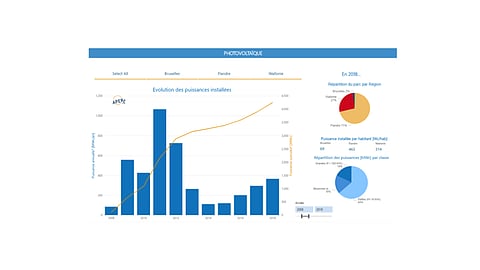

The PV market in Belgium grew to its highest level in 2018 compared to the last 6 years – it added 367 MW of new capacity. This led solar to account for 4% of the country's final energy consumption, producing 4 TWh of clean energy. This is a growth of more than 39% over the 264 MW installed in 2017, according to provisional numbers released by the Belgium's Association for the Promotion of Renewable Energies (APERe) (see Belgium Installed 264 MW Of PV In 2017).
The Dutch speaking region of Flanders installed 218 MW, that's the highest contribution to the Belgian numbers. Thus Flanders maintains its top position among the country's 3 regions. French speaking Wallonia installed 133 MW, growing by 77% over previous year, while Brussels installed 16 MW, compared to last year's 9 MW.
In all, the country's cumulative installed solar power capacity at the end of 2018 reached 4,255 MW or 374 W per inhabitant. Flanders leads with 71% or 3,035 MW of the total, with 27% coming from Wallonia (1,136 MW) and 2% from the capital region of Brussels (83 MW).
Even though Brussels adds the lowest to the total, it is characterized by large installations of over 10 kW, observed APERe.
Belgium's total installed solar capacity comes from 526,000 systems of which 98% are residential systems up to 10 kW. Out of the total installed capacity, the residential segment contributes 64%, while the rest are commercial and industrial systems. However, Flanders is now also exploring large-scale solar, such as the 99 MW Kristal Solar Park being developed by Engie Fabricom (see 99 MW Solar Park For Belgium).
.png?w=50&fm=png)